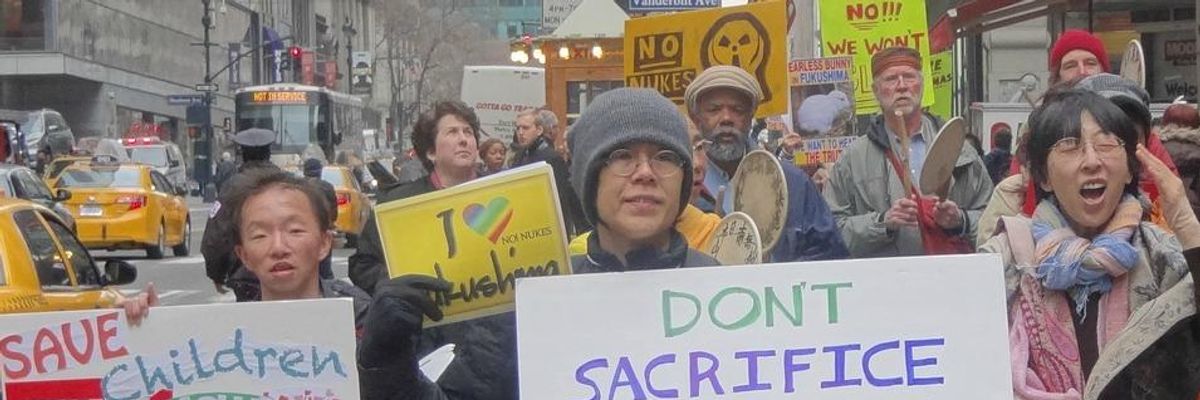The number of Fukushima youth diagnosed with definitive or suspected thyroid gland cancer now reaches 104, according to a Japanese newspaper's analysis of government data.
There were 300,000 total youth in the Fukushima prefecture who were aged 18 or younger at the time of the 2011 Fukushima nuclear disaster. Of the 104 children whose government-administered thyroid gland tests showed positive results, 57 have been diagnosed with a definitive case of the disease, which is frequently linked to radiation exposure, Asahi Shimbun reported Sunday.
Government officials deny any link between the diagnoses and the nuclear accident. However, when compared with thyroid cancer rates at nearby prefectures, the Fukushima average of more than 30 people per population of 100,000 ranks "much higher." For example, the development rate of thyroid cancer among late teens in the Miyagi Prefecture is only 1.7 people per 100,000.
According to the report, after the 1986 Chernobyl nuclear disaster, thyroid cancer rates only began to rise after four years. However, scientists hope that with updated "high-precision tests" and increased monitoring, diagnoses will come sooner.
"We must continue closely examining the people's health in order to determine the impact of radiation exposure on causing thyroid tumors," Yoshio Hosoi, professor of radiation biology at Tohoku University, told Asahi Shimbun.

